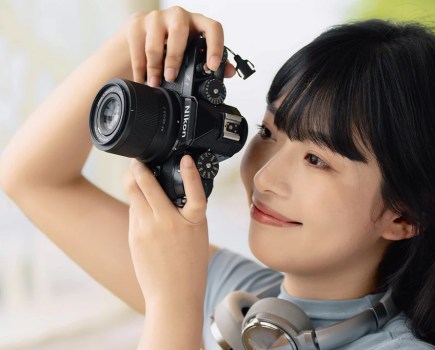PAGE ONE: DETECTIVE WORK FINDS MORE REFUGEES
 Dr Knut Kühn-Leitz, the grandson of Ernst Leitz II, spoke to AP after giving a speech at an event hosted by The Leica Society in High Wycombe, Buckinghamshire
Dr Knut Kühn-Leitz, the grandson of Ernst Leitz II, spoke to AP after giving a speech at an event hosted by The Leica Society in High Wycombe, Buckinghamshire
Picture: Damien Demolder
EXCLUSIVE: Investigators have traced more refugees who were helped to escape Nazi Germany by the fearless boss of Leica cameras.
Ernst Leitz II, who ran the Wetzlar-based optics business after his father?s death in 1920, risked his life to help around 80 Jews and other persecuted people flee Hitler?s regime.
Leitz – dubbed a photographic industry equivalent of Oskar Schindler – helped Jews find jobs outside Germany, securing immigration visas and paying the travel expenses of refugees bound for the United States.
Many Jews were helped to leave Germany before war broke out in 1939, when the country closed its borders.
They fled Germany under the guise of Leitz employees, until they could find work overseas.
Such was the Nazi reliance on Leica optics for military purposes, that officials largely turned a blind eye to Leitz?s activities.
Amateur Photographer can reveal that more refugees have come forward following new research led by London-based Rabbi Frank Dabba Smith.
Dabba ? who first published a book about the so-called ?Leica Freedom Train? in 2002 – has traced several more refugees who are alive today.
The discoveries followed painstaking research which involved the US-born Rabbi scouring online auction site eBay for documents, providing evidence that links Leitz with the refugee project.
One escapee, who changed her name to ?Enfield? since fleeing the Nazis, now lives in New York and is in her late 80s.
?Her short-term memory is poor but her long-term recall good,? said Dr Knut Kühn-Leitz, the grandson of Leitz II in an interview with Amateur Photographer magazine.
‘Maybe she knows some more people,? added Dr Kühn-Leitz who retired from the business in 1986.
 Dr Knut Kühn-Leitz refuses to accept that his grandfather was a ‘hero’. In his speech he said Ernst Leitz II was ‘defined by a personal sense of responsibility to employees, their families and many other citizens’
Dr Knut Kühn-Leitz refuses to accept that his grandfather was a ‘hero’. In his speech he said Ernst Leitz II was ‘defined by a personal sense of responsibility to employees, their families and many other citizens’
Picture: Chris Cheesman
‘Nightmarish years’
On a rare visit to the UK, Dr Kühn-Leitz (pictured) had earlier spoken candidly about the bravery of his grandfather.
?He could not bear it when fellow human beings had to suffer under the relentless Nazi regime,? he told members of The Leica Society at an event in High Wycombe, Buckinghamshire earlier this month.
Refusing to label his grandfather a ?hero?, Dr Kühn-Leitz added: ?After the war he never said a word about his relief efforts.?
In an emotional speech he added: ?During the nightmarish years between 1935 and 1945, Ernst Leitz enabled many Jewish citizens to flee Germany, particularly to the United States and Great Britain.
?His help was defined by a personal sense of responsibility not only towards his employees and their families, but towards many other citizens, regardless of their religion or world view.?
He said his grandfather enabled many Jews to complete their training at his factory ?long after 1933?.
Daughter arrested
The process was not without risks. In 1938 the Gestapo was tipped off that Leitz had been helping the Jews. This led them to arrest Alfred Turk, a sales executive at the firm.
In 1943, Leitz?s daughter Elsie was jailed after helping Hedwig Palm – a Jewish resident of Wetzlar – escape to Switzerland.
Both Alfred and Elsie were freed, but only after the Gestapo were handed large bribes.
PAGE TWO: PICTURE POST CONNECTION
(continued)
Picture Post connection
Leitz II procured overseas appointments at associated companies and continued to supply Jewish-owned camera shops and photographic studios until he helped Jews leave Germany.
They ended up in roles such as sales people, photo technicians and reporters.
Among those who fled Germany before Hitler’s regime took hold was Edith Katzenstein, who left Germany in 1933.
Edith headed up the darkroom operations of Picture Post magazine in London, using the training she had received from Leica.
She later went on to run her own darkroom, and counted photographic luminaries such as Henri Cartier-Bresson and Patrick Lichfield among her clients.
Further accounts of the part Leitz II played in saving Jewish people from persecution will be revealed in a new, fully revised, book due out next year.
Ernst Leitz II co-founded the Wetzlar branch of the German Democratic Party in 1918.
He had come into conflict with the National Socialists from an early stage. They saw him as an arch enemy, due to his liberal-democratic views which had been influenced by overseas trips to Britain, France and the United States.
Dr Knut Kühn-Leitz was speaking at the Leica Society AGM and Leica Day.
For details of the Leica Society visit www.theleicasociety.org.uk






